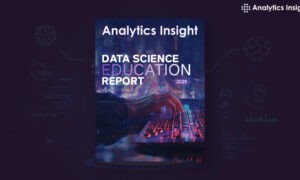Businesses and institutions generate a lot of information and data, bringing the need for big data. Using big data during recruitment helps you predict your hiring needs. It, therefore, saves time, increases the quality of your hires, and boosts employee retention and engagement. It also enhances the efficiency of employee training and increases its success.
Despite the numerous benefits, big data has its challenges regarding employment discrimination. Read on for more information about big data, the employment discrimination risks it poses, and ways to reduce the risks.
What is Big Data?
Big data refers to large amounts of information or data that is difficult to process using traditional methods. It applies to structured and unstructured data from various sources and formats, ranging from spreadsheets and databases to emails, pictures, and audio files. With the right technologies, you can process, manage and manipulate big data to discover patterns and correlations, and gain valuable insights. Businesses can use big data analytics to make smarter decisions, increase efficiency and stay ahead of the competition.
Employers can apply big data at the workplace in the following ways.
1) Acquisition of New Employees
Companies use big data analytics to shorten the recruitment process. Machine learning helps in talent acquisition by funneling large numbers of applicants and selecting the most qualified for the job. Doing so streamlines the screening process as talent analytics help identify candidates with qualifying characteristics. Companies can also use big data to diversify their workforce using the information they obtain from their candidates.
2) Employee Engagement
Employers can use big data to find out ways of improving employee performance. As an employer, you can do this by using key metrics that provide insight on employees, such as what they care about, their motivation, and what hinders their performance. You can also reward well-performing employees and understand the reason for low performance with the help of big data. The surveys can also help during employee retention by showing the motivation for employees leaving the company. You can use the information to do better and retain top talent.
3) Enhance Employee Training
To improve employee efficiency, training and personal development are necessary. Employers can apply big data analytics to tailor training sessions according to employee learning abilities. Doing so makes employee training more cost-effective and allows for easy blending of training activities into worker’s routines. It also helps in establishing the effectiveness of training before administering it. Lastly, employers can measure the effectiveness of talent development efforts through performance evaluations.
Employers can utilize big data analytics to enhance the employment process in all stages ranging from talent acquisition to promotion.
How Big Data Leads to Employment Discrimination
The Equal Employment Opportunity Commission (EEOC) protects employees from discrimination based on sex, race, age, disability, religion, national origin, color, and genetic information. Big data presents the risk of employment discrimination leading to employer liability. The bias comes from the fact that it is difficult for employers to understand how algorithms, machine learning, and data mining work to produce the results.
While big data helps eliminate human bias, it can lead to employment discrimination as algorithms are only as good as the data it works with. Therefore, using big data with pre-existing prejudice and bias can result in discriminatory results.
Since big data algorithms use internal and external data trails, discrimination may occur when information associated with a particular desired characteristic causes disfavor against an applicant when hiring. For example, if data mining collections an applicant’s health history and the algorithms correlate the illness to low productivity, it may lead to discrimination claims.
Also, discrimination may occur when an employees’ inability to use some technologies hinders them from getting a proper assessment. This is because some employee groups may not have as much access to certain technologies as their colleagues. Employers who use targeted job ads in social media may end up discriminating against some populations, such as older professionals, from viewing job advertisements. Doing so denies them the opportunity to apply for the job, leading to discrimination.
Minimizing the Risk of Employment Discrimination from Big Data
It is every employer’s responsibility to ensure fairness in the workplace. Here are a few tips for minimizing employment discrimination from big data.
- Always be wary of data that misses or omits information from specific populations as it creates room for bias.
- Learn about big data analytics and establish specific problems or questions you need to answer for more accurate results
- Perform due diligence on your big data analytics approaches and vendors before making a choice
- Conduct periodic evaluation of big data tools to identify discriminatory potential
- Seek legal advice from a labor law before using big data in the workplace
While big data offers numerous benefits to businesses, employers should be careful in its application to prevent employment discrimination. If you feel like you are a victim of employment discrimination due to misuse of big data and related technologies, don’t hesitate to consult an expert on labor for help.



































